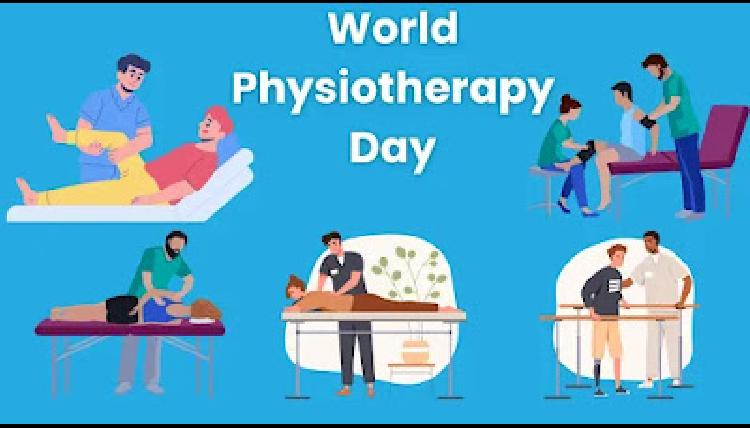-
Your Trusted Service Provider
- +91 9427555696
- drkhushboo26@gmail.com
World Physiotherapy Day: Celebrating the Power of Healing Through Movement
September 12, 2025

Every year, on September 8th, the world observes World Physiotherapy Day—a day dedicated to acknowledging the incredible contributions physiotherapists make to our lives. From helping patients recover from serious injuries to improving posture and preventing long-term health issues, physiotherapists are truly the unsung heroes of healthcare.
1. Why Physiotherapists Matter
Imagine waking up with severe back pain that makes it difficult to even sit, or think of an elderly person who has suffered a stroke and is unable to walk without support. In such situations, a physiotherapist steps in as a guide to recovery, offering treatments that focus on restoring strength, balance, and movement.
Physiotherapists matter because:
- Whether it’s pain management, post-surgery rehabilitation, or injury recovery, physiotherapists help people regain independence.
- By correcting posture, strengthening weak muscles, and educating patients on body mechanics, physiotherapists reduce the risk of recurring issues.
- Instead of masking pain with medications, physiotherapists focus on the root cause, addressing both immediate discomfort and long-term well-being.
- Physiotherapists work alongside doctors, surgeons, and other healthcare providers to ensure patients receive complete care.
2. How Physiotherapy Can Be Helpful in Our Daily Life
Most people think physiotherapy is only for athletes or those recovering from surgeries, but the truth is—it benefits everyone in daily life.
Here’s how:
- For people suffering from chronic neck, back, or joint pain, physiotherapy offers drug-free relief through targeted exercises, stretches, and manual therapy.
- In today’s digital age, where long hours of sitting are common, physiotherapy helps correct posture, reduces stiffness, and improves overall mobility.
- Regular physiotherapy exercises strengthen muscles and joints, making the body more resilient against injuries during daily activities or sports.
- Especially for the elderly, physiotherapy plays a critical role in preventing falls and maintaining independence.
- Post-stroke, paralysis, or even after prolonged illness, physiotherapy helps rebuild lost strength and functionality.
- From office workers to professional athletes, physiotherapy boosts physical performance by improving endurance, strength, and movement patterns.
3. Five Types of Physiotherapy Techniques
Physiotherapy isn’t a one-size-fits-all approach. Depending on the condition and individual needs, physiotherapists use different techniques to ensure effective results. Here are five widely practiced and highly effective methods:
1. Manual Therapy
This involves hands-on techniques such as joint mobilization, soft tissue manipulation, and stretching. It helps reduce stiffness, improve circulation, and restore normal movement. Manual therapy is especially useful for conditions like arthritis, frozen shoulder, or chronic back pain.
2. Exercise Therapy
Exercise programs are at the core of physiotherapy. These exercises range from simple stretching routines to advanced strength-building regimens. Exercise therapy not only aids in recovery but also prevents future injuries by enhancing muscle strength and joint stability.
3. Electrotherapy
Physiotherapists use advanced devices like ultrasound, TENS (Transcutaneous Electrical Nerve Stimulation), or laser therapy to reduce pain and inflammation. This technique is highly effective for conditions like nerve pain, sports injuries, and post-surgical rehabilitation.
4. Hydrotherapy
Also known as aquatic therapy, this technique involves exercises performed in water. The buoyancy of water supports the body, making it easier for patients with limited mobility or joint problems to perform movements. Hydrotherapy is particularly beneficial for arthritis, post-surgery recovery, and neurological conditions.
5. Dry Needling and Trigger Point Therapy
Used for relieving muscle knots and chronic tension, dry needling involves inserting fine needles into specific trigger points. It reduces pain, improves blood flow, and restores muscle function. This technique is often used in cases of sports injuries or chronic muscular pain.
Conclusion:
On this World Physiotherapist Day, let’s take a moment to appreciate the physiotherapists who dedicate their skills and compassion to helping people live healthier, pain-free, and more active lives.
Physiotherapists matter because they restore not just movement, but also dignity and independence. They make a difference in our daily lives by preventing injuries, reducing pain, and helping us stay strong. And through a variety of innovative techniques—from manual therapy to hydrotherapy—they empower patients on their journey to recovery.
So the next time you find yourself struggling with pain, poor posture, or limited mobility, remember: a physiotherapist can be the key to unlocking a healthier, stronger, and more confident you.